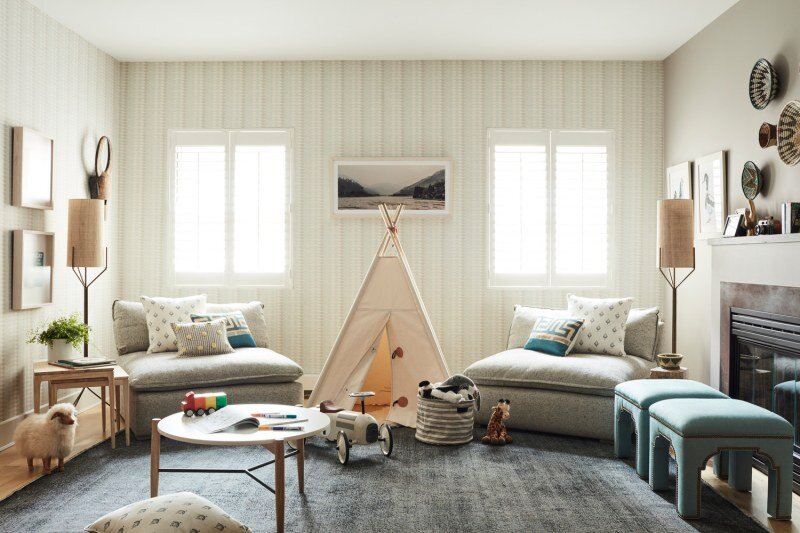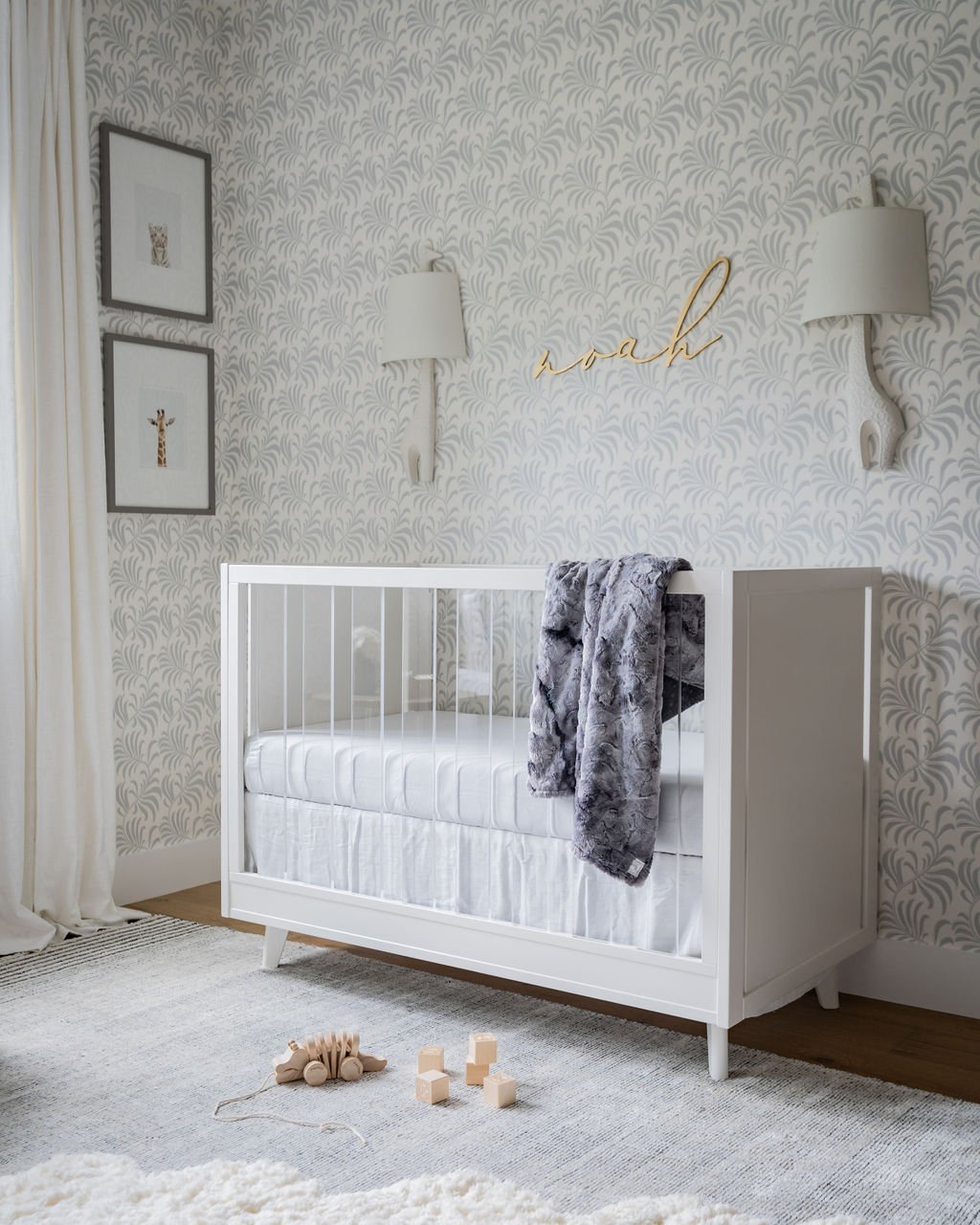HOW TO CREATE A CHILD FRIENDLY LIVING SPACE
Home of Lucy Liu
If you are like many parents, having the luxury of a completely separate playroom probably isn't an option in your home. To be able to dedicate a room specifically for your child and their interests would be awesome, especially with the option of closing the door when an unsightly mess is staring you down. Still, most parents must get a bit imaginative when combining family spaces along with playroom concepts, such as a central living space that gets a lot of daily use by both adults and kids. Besides, children tend to dominate every area in the house anyway, right?
The struggle is real when designing your own space, let alone having to factor in a child's interests and needs. And of course, keeping overall style and function in mind. However, there are many sophisticated design concepts that parents can create, which incorporate their personal style, as well as their child's needs, and still be functional for all who spend time in the space. To show you just how this can be accomplished, below are some design ideas that you can incorporate into your own shared spaces for both parents and kids to enjoy.
Flooring
Hardwood and tile would be the most durable and easiest to clean if you are starting fresh. Of course, those surfaces are not soft on the knees and elbows when kids are crawling and playing and they are also colder surfaces. Adding an area rug or play mats will soften the space for them and you as well. When choosing a rug, the first thing is to make sure the material contents are non-toxic. Look for pure, organic fibers such as cotton or wool, jute or sisal. Stay away from synthetic fibers such as nylon, olefin, polyester and rayon, which are chemically produced. Avoid flame retardants and stain repellants - made from perfluorinated compounds (PFC’s) which are highly toxic and are added to almost all conventionally made rugs. These added chemicals will off-gas into the air. Viscose and silk will be impossible to clean and can stain with even just a drop of water. Whether you have hardwood, tile or carpet in your living area, adding soft play mats will help create a designated space for the kids to play and keep their toys. Here are a few non-toxic rug and play mat options that we love:
Organic Weave - certified organic area rugs
Cream Haus - Folding play mats
Seating
Choose upholstered furniture that is easy to clean and can hold up to wear and tear. Leather is a great option that wears well with time, and as mentioned above, look for upholstery made of natural fibers to avoid the toxic off-gassing that occurs with synthetic fibers. Heavier fabrics with tighter weaves and higher rub counts will be most durable.
Sofa fabrics that are dark or have a pattern will disguise any imperfections that may come down the road.
If you can find a large, comfy chair that you and your child can cuddle on together, you’ll be thanking yourself down the road. This can help encourage your child's love of books and you may even get to enjoy this space alone while your child is napping – that is, if you don't have 100 loads of laundry and dishes still left to do.
Image from Emily Henderson
Tables
Upholstered coffee tables, ottomans and poufs are great alternatives to wood, iron, glass and stone coffee tables. They eliminate sharp corners, so your child doesn't get hurt, especially when they are learning to stand or walk – remember, safety first. Using an ottoman allows your child to practice walking a few steps from the ottoman and the couch with a soft landing, and they also make great footstools for adults.
If ottomans are not your style, and you still love the look of a coffee table, try a round coffee table to eliminate any sharp edges. Just make sure the table is made of durable materials to withstand some coloring and other activities that your little one will be tempted to use this surface for.
Ottoman from Article.com
Storage and Organization
Having a storage piece dedicated to toys will allow you to clean up quickly and keep your living space tidy. A dual living and play space is attainable, but you definitely don’t want to feel overcome by toys and have a disaster on display when guests are visiting. Sitting on a Tonka truck or stepping on a Lego….you know the feeling. Storage ottomans are useful for storing toys and also doubles as additional seating. Or add a decorative chest to the corner of the room, and no one will suspect that toys are hidden inside waiting to be played with.
Image from Danielle Moss
Play Corner
Dedicate an area of the room specifically for your child, incorporating child-size furniture or activity pieces. Poufs and teepees are great in creating this kind of space. And remember the play mats I mentioned from point 1 above? If you can dedicate a play corner, play mats are perfect for your child to play on. They soften your floor surface and identify that area as child friendly.
Image from Danielle Moss
We hope these ideas help get you started with your multi-use living rooms. Keeping in mind that the goal is to create a space that your entire family - from adults to children, will want to sit, read and play in. It can become organized playtime for the kids as well as a relaxing, social environment for mom, dad and friends. We’d love to see the spaces you create. Please share with us via email, and we will include in an upcoming post.
Priscilla Avila
Priscilla has worked in the field of social services for ten years, working in programs focused on child welfare. Priscilla has a bachelor's degree in Psychology and a bachelor's degree in Human Development with an emphasis in child development.

















